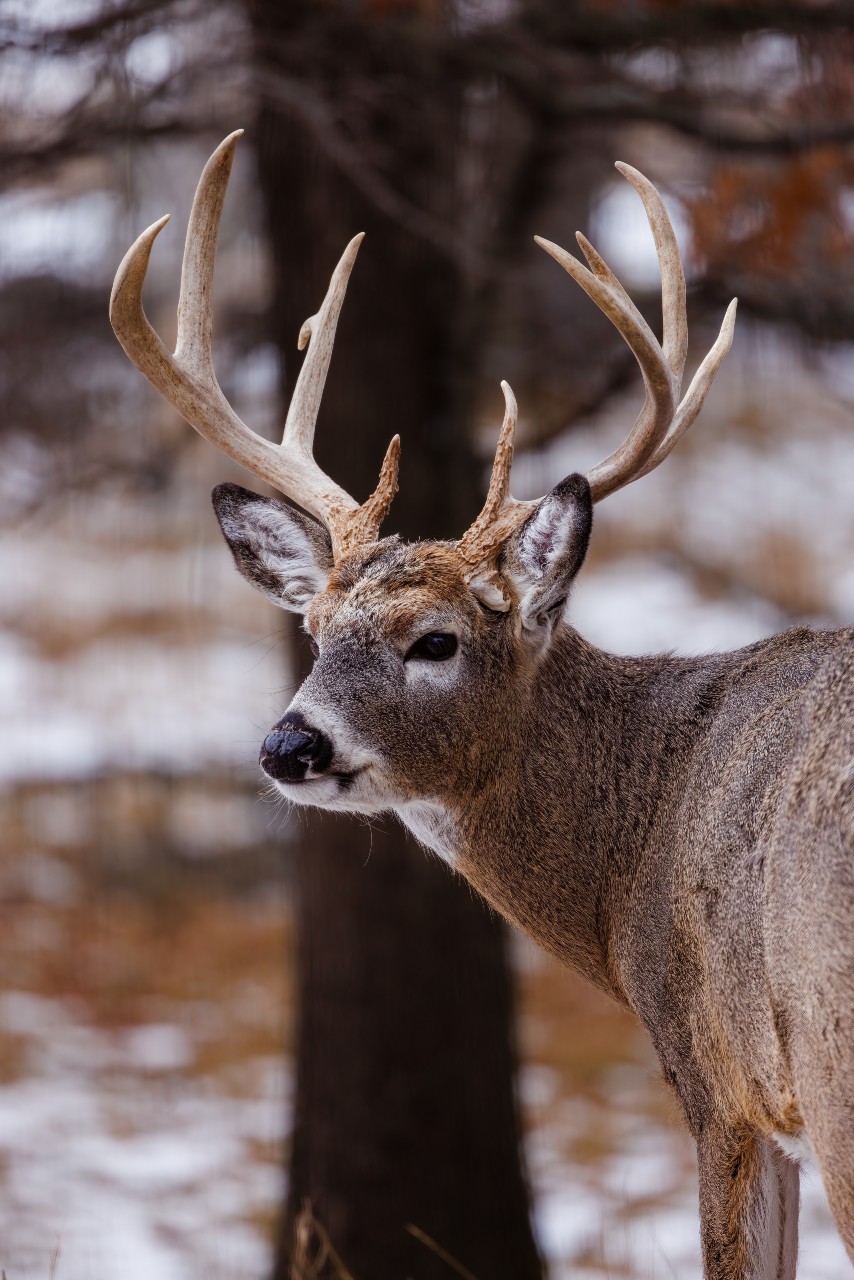The breeding patterns of whitetail deer make them intriguing creatures. Deer breed following the typical climatic conditions in a region. Deer will often reproduce in the autumn to take advantage of the spring and summer months so that the fawn can mature sufficiently to face the hardships of the next winter season. The first year of a does’ existence is often barren for mating; however, there may be exceptions if nutrition is excellent. About seven months pass during gestation.
Buck deer must go through a complex process before mating. The bucks will have a complete set of antlers with velvet covering them before the doe enters estrus. The velvet carries the blood supply to the developing antlers. The velvet is lost by bucks when they rub their antlers against bushes and small trees as mating season, often known as the rut, approaches. These rubbings on trees identify a buck area and resemble trail blazes. These indicators will be seen by other bucks, who will inspect them. Pre-orbital glands close to the eyes produce a fragrance in the rubbing.
Additionally, the bucks will start making scrapes. They will remove grass and leaves from the ground with their paws and then urinate in the bare place. They bend their hind legs together when pee so that urine flows over their tarsal and metatarsal glands, depositing the fragrance in the scratches.
To leave more fragrance, scrapes are often placed strategically where an overhanging limb may be licked. There is visible proof of the existence of the tracks in the scratches. In addition to leaving extra fragrance in the scrapes and on the path they travel, interdigital glands between the hoof also produce odor.
Bucks may spar as the breeding season approaches, and some of these fights can be so fierce that bucks may lose their antlers or even be gored. Death might ensue from these wounds. Bucks may lock antlers, which results in their deaths.
The dominant bucks will breed the does as soon as he goes into estrus, chasing after them. While the dominant buck is involved in a dispute with another buck, subordinate bucks will linger around to get the opportunity to breed a doe. The buck will remain with the doe for the duration of her estrus. He will go after she has passed estrus to find another doe.
Most does breed quickly; however, some younger ones may enter estrous a month later than mature ones. At that time, they will be bred. The mature buck loses a significant body weight while eating relatively little during the autumn breeding season. If they can survive the mating season, they will consume intensively to replenish part of their fat stores.
Will give birth to one or two fawns. After delivery, they will have spots for a while, and their aroma will be minimal. They will remain hidden for a few weeks, receiving daily feedings from the doe until they are fed enough to follow her.
During mating season, antlers are utilized as both attacking and defensive weapons to intimidate does and rule over rival bucks. Antlers are shed after breeding is over, late winter begins, and they will grow back the following spring. Whitetail deer hunters use these antlers for exhibitions, crafts or as trophies.

